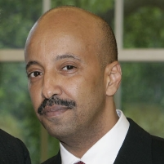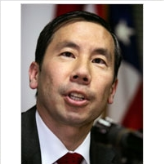Ethiopia
Several Ethiopian American organizations claimed the exhibition violates the 1999 UNESCO international resolution on the transport of hominid fossils.
Appointment: Jul 20, 1908
Presentation of Credentials: Jul 6, 1909
Termination of Mission: Left post, Feb 8, 1910
Appointment: Oct 12, 1927
Presentation of Credentials: Mar 1, 1928
Termination of Mission: Left post, Oct 26, 1934
Appointment: Feb 7, 1936
Presentation of Credentials: Apr 30, 1936
Termination of Mission: Italian forces occupied Addis Ababa, May 6, 1936. Engert left post, May 4, 1937.
Appointment: Apr 14, 1943
Presentation of Credentials: Aug 31, 1943
Termination of Mission: Left post, Aug 26, 1945
Appointment: Feb 20, 1945
Presentation of Credentials: Oct 5, 1945
Termination of Mission: Left post, Oct 8, 1947
Appointment: May 15, 1947
Presentation of Credentials: Jan 1, 1948
Termination of Mission: Left post, Mar 17, 1951
Appointment: Apr 19, 1951
Presentation of Credentials: May 14, 1951
Termination of Mission: Left post, Jan 19, 1953
Appointment: Jul 22, 1953
Presentation of Credentials: Oct 6, 1953
Termination of Mission: Left post, May 1, 1957
Appointment: May 20, 1957
Presentation of Credentials: Jun 22, 1957
Termination of Mission: Left post, Jun 4, 1960
Appointment: Jun 24, 1960
Presentation of Credentials: Aug 26, 1960
Termination of Mission: Left Ethiopia, Nov 25, 1962
Appointment: Mar 9, 1963
Presentation of Credentials: Apr 20, 1963
Termination of Mission: Left post, Sep 22, 1967
Appointment: Sep 13, 1967
Presentation of Credentials: Oct 27, 1967
Termination of Mission: Left post, May 15, 1971
Appointment: May 11, 1971
Presentation of Credentials: Jul 8, 1971
Termination of Mission: Left post, Feb 12, 1974
Appointment: Feb 11, 1974
Note: Declined appointment.
Appointment: Feb 20, 1975
Presentation of Credentials: Apr 3, 1975
Termination of Mission: Left post, Jul 6, 1976
Appointment: Jun 27, 1978
Presentation of Credentials: Jul 21, 1978
Termination of Mission: Left post, Jul 29, 1980
Appointment: Jun 15, 1982
Presentation of Credentials: June 24, 1992
Termination of Mission: Left post, July 8, 1994
Appointment: May 9, 1994
Presentation of Credentials: July 22, 1994
Termination of Mission: Left post, Jun 26, 1996
Appointment: Jun 6, 1996
Presentation of Credentials: Jul 2, 1996
Termination of Mission: Left post Aug 14, 1999
Appointment: Aug 9, 1999
Presentation of Credentials: Oct 12, 1999
Termination of Mission: Left post Jul 19, 2002
Appointment: Oct 3, 2002
Presentation of Credentials: Nov 20, 2002
Termination of Mission: Left post, Sep 2, 2005
 Assefa, Samuel
Assefa, Samuel
- Table of Contents
- News
- Overview
- Basic Information
- History
- Newspapers
- History of U.S. Relations with Ethiopia
- Current U.S. Relations with Ethiopia
- Where Does the Money Flow
- Controversies
- Human Rights
- Debate
- Past Ambassadors
- Ambassador to the U.S.
- Embassy Web Site in the U.S.
- Comments
- Leave a comment
U.S. Ambassador to Ethiopia

The next ambassador to the northeast African nation of Ethiopia, which was the only African nation to successfully maintain its independence during the Age of Empire, will be Patricia Haslach. If confirmed by the Senate, Haslach would succeed Donald Booth, who served in Addis Ababa from 2009 to 2012. In her most recent position, Haslach served as principal deputy assistant secretary in the State Department’s newest bureau, the Bureau of Conflict and Stabilization Operations, starting January 24, 2013.
Born in Rockville Center, New York, in 1956, Haslach moved with her family to Lake Oswego, Oregon in 1971. Her father, Frank Haslach, was an asset and recovery manager for Evans Products and Oregon Bank. She graduated St. Mary’s Academy in 1974, earned her B.A. in Political Science at Gonzaga University in 1978, and her M.A. in International Affairs at Columbia University in 1981.
Haslach began her career with the federal government in 1986 as an agricultural attaché with the Foreign Agricultural Service at the U.S. Department of Agriculture, assigned to India from 1987 to 1990. Transferring to the State Department as an economic officer, she was posted to the U.S. Mission to the European Union managing assistance to the Group of 24 countries. In the years following, Haslach served as resource officer at the embassies in Jakarta, Indonesia, and in Lagos, Nigeria. From 2000 to May 2002, she served as economic counselor at the embassy in Islamabad, Pakistan, while her husband, David Herbert was the embassy’s general services officer. As Pakistan became part of the front line in President George W. Bush’s war against Islamic terrorism, Haslach gave up her post to move her two daughters back to the United States..
In her next stateside post as director of the Office of Afghanistan Reconstruction from 2002-2004, Haslach oversaw the multi-billion-dollar reconstruction program intended to fix some of the damage caused by war. Haslach then served two straight stints as an ambassador, first as ambassador to Laos from 2004 to 2007, and then as ambassador to the Asia Pacific Economic Cooperation Forum, headquartered in Singapore, from 2007 to 2009.
She served as assistant chief of mission for assistance transition at the embassy in Baghdad, Iraq, from July 2009 to June 2010, and as deputy coordinator for diplomacy for the U.S. Global Hunger and Food Security Initiative from June 2010 to March 2011. From then until late 2012, Haslach was the State Department’s coordinator for Iraq transition in the Office of the Deputy Secretary for Management and Resources.
Patricia Haslach has two adult daughters, Shereen and Kiran Herbert.
-Matt Bewig
On a Mission (by Cliff Newell, Portland Tribune)
Q&A with Ambassador Patricia Haslach, a Lake Oswego Native to be Honored for Career as U.S. Diplomat (by Victoria Edwards, The Oregonian)
morePrevious U.S. Ambassador to Ethiopia

Yamamoto entered the Foreign Service in 1980. His assignments have included the US Embassy in Beijing as staff aide to the ambassador and human rights officer during the Tiananmen Square demonstrations in 1989; as principal officer of the Fukuoka Consulate in Japan; and as Chargé d’Affaires at US Embassy Asmara in Eritrea.
Several Ethiopian American organizations claimed the exhibition violates the 1999 UNESCO international resolution on the transport of hominid fossils.
Appointment: Jul 20, 1908
Presentation of Credentials: Jul 6, 1909
Termination of Mission: Left post, Feb 8, 1910
Appointment: Oct 12, 1927
Presentation of Credentials: Mar 1, 1928
Termination of Mission: Left post, Oct 26, 1934
Appointment: Feb 7, 1936
Presentation of Credentials: Apr 30, 1936
Termination of Mission: Italian forces occupied Addis Ababa, May 6, 1936. Engert left post, May 4, 1937.
Appointment: Apr 14, 1943
Presentation of Credentials: Aug 31, 1943
Termination of Mission: Left post, Aug 26, 1945
Appointment: Feb 20, 1945
Presentation of Credentials: Oct 5, 1945
Termination of Mission: Left post, Oct 8, 1947
Appointment: May 15, 1947
Presentation of Credentials: Jan 1, 1948
Termination of Mission: Left post, Mar 17, 1951
Appointment: Apr 19, 1951
Presentation of Credentials: May 14, 1951
Termination of Mission: Left post, Jan 19, 1953
Appointment: Jul 22, 1953
Presentation of Credentials: Oct 6, 1953
Termination of Mission: Left post, May 1, 1957
Appointment: May 20, 1957
Presentation of Credentials: Jun 22, 1957
Termination of Mission: Left post, Jun 4, 1960
Appointment: Jun 24, 1960
Presentation of Credentials: Aug 26, 1960
Termination of Mission: Left Ethiopia, Nov 25, 1962
Appointment: Mar 9, 1963
Presentation of Credentials: Apr 20, 1963
Termination of Mission: Left post, Sep 22, 1967
Appointment: Sep 13, 1967
Presentation of Credentials: Oct 27, 1967
Termination of Mission: Left post, May 15, 1971
Appointment: May 11, 1971
Presentation of Credentials: Jul 8, 1971
Termination of Mission: Left post, Feb 12, 1974
Appointment: Feb 11, 1974
Note: Declined appointment.
Appointment: Feb 20, 1975
Presentation of Credentials: Apr 3, 1975
Termination of Mission: Left post, Jul 6, 1976
Appointment: Jun 27, 1978
Presentation of Credentials: Jul 21, 1978
Termination of Mission: Left post, Jul 29, 1980
Appointment: Jun 15, 1982
Presentation of Credentials: June 24, 1992
Termination of Mission: Left post, July 8, 1994
Appointment: May 9, 1994
Presentation of Credentials: July 22, 1994
Termination of Mission: Left post, Jun 26, 1996
Appointment: Jun 6, 1996
Presentation of Credentials: Jul 2, 1996
Termination of Mission: Left post Aug 14, 1999
Appointment: Aug 9, 1999
Presentation of Credentials: Oct 12, 1999
Termination of Mission: Left post Jul 19, 2002
Appointment: Oct 3, 2002
Presentation of Credentials: Nov 20, 2002
Termination of Mission: Left post, Sep 2, 2005
 Assefa, Samuel
Assefa, Samuel
Comments
U.S. Ambassador to Ethiopia

The next ambassador to the northeast African nation of Ethiopia, which was the only African nation to successfully maintain its independence during the Age of Empire, will be Patricia Haslach. If confirmed by the Senate, Haslach would succeed Donald Booth, who served in Addis Ababa from 2009 to 2012. In her most recent position, Haslach served as principal deputy assistant secretary in the State Department’s newest bureau, the Bureau of Conflict and Stabilization Operations, starting January 24, 2013.
Born in Rockville Center, New York, in 1956, Haslach moved with her family to Lake Oswego, Oregon in 1971. Her father, Frank Haslach, was an asset and recovery manager for Evans Products and Oregon Bank. She graduated St. Mary’s Academy in 1974, earned her B.A. in Political Science at Gonzaga University in 1978, and her M.A. in International Affairs at Columbia University in 1981.
Haslach began her career with the federal government in 1986 as an agricultural attaché with the Foreign Agricultural Service at the U.S. Department of Agriculture, assigned to India from 1987 to 1990. Transferring to the State Department as an economic officer, she was posted to the U.S. Mission to the European Union managing assistance to the Group of 24 countries. In the years following, Haslach served as resource officer at the embassies in Jakarta, Indonesia, and in Lagos, Nigeria. From 2000 to May 2002, she served as economic counselor at the embassy in Islamabad, Pakistan, while her husband, David Herbert was the embassy’s general services officer. As Pakistan became part of the front line in President George W. Bush’s war against Islamic terrorism, Haslach gave up her post to move her two daughters back to the United States..
In her next stateside post as director of the Office of Afghanistan Reconstruction from 2002-2004, Haslach oversaw the multi-billion-dollar reconstruction program intended to fix some of the damage caused by war. Haslach then served two straight stints as an ambassador, first as ambassador to Laos from 2004 to 2007, and then as ambassador to the Asia Pacific Economic Cooperation Forum, headquartered in Singapore, from 2007 to 2009.
She served as assistant chief of mission for assistance transition at the embassy in Baghdad, Iraq, from July 2009 to June 2010, and as deputy coordinator for diplomacy for the U.S. Global Hunger and Food Security Initiative from June 2010 to March 2011. From then until late 2012, Haslach was the State Department’s coordinator for Iraq transition in the Office of the Deputy Secretary for Management and Resources.
Patricia Haslach has two adult daughters, Shereen and Kiran Herbert.
-Matt Bewig
On a Mission (by Cliff Newell, Portland Tribune)
Q&A with Ambassador Patricia Haslach, a Lake Oswego Native to be Honored for Career as U.S. Diplomat (by Victoria Edwards, The Oregonian)
morePrevious U.S. Ambassador to Ethiopia

Yamamoto entered the Foreign Service in 1980. His assignments have included the US Embassy in Beijing as staff aide to the ambassador and human rights officer during the Tiananmen Square demonstrations in 1989; as principal officer of the Fukuoka Consulate in Japan; and as Chargé d’Affaires at US Embassy Asmara in Eritrea.







Comments